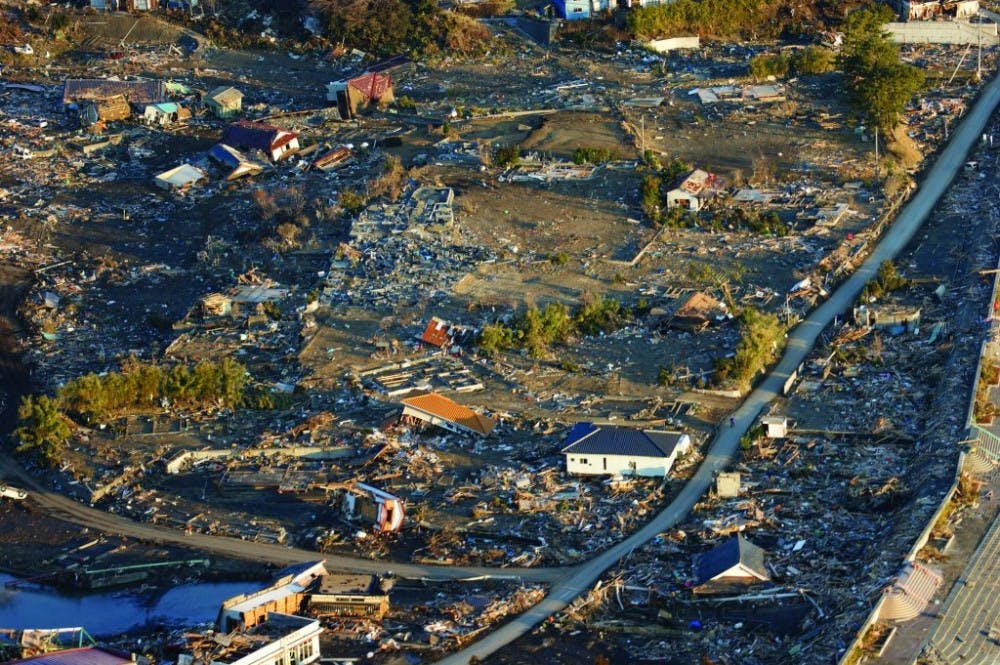A 7.0 magnitude earthquake hit Japan’s Kyushu region on April 16. There have been a total of 32 reported deaths, according to Kumamoto Prefecture’s disaster management office. Following the earthquake, heavy rains struck the region, making the search for the remaining survivors even more difficult. The quake struck near the city of Kumamoto and turned landmarks into piles of debris, taking down buildings and other structures.
“We don’t know what is happening in the whole disaster area because it is a remote mountain area and some big bridges were down and many landslides were found, so we were working around the clock and are making assessments,” Nobuaki Sato, director of the International Relief Division at the Japanese Red Cross, said according to CNN. “But so far the road access is not easy to the remote areas.”
Two days prior to the 7.0 magnitude earthquake, a 6.2 quake shook a nearby area, Ueki City, taking the lives of nine civilians. The combined “twin-quakes” have killed 41 and have left 968 people injured, according to Japan’s disaster management office.
“The first earthquake was very big,” Osamu Yoshizumi, the senior chief of international affairs in Kumamoto, said according to CNN. “We thought it was the big one.”
The Kyushu regions continues to experience aftershocks, which have totaled about 165 so far. The aftershocks are hampering rescue efforts and are making many of the evacuees reluctant to return to their home.
With the threat of landslides, the situation continued to worsen and in a Sunday morning press briefing, Prime Minister Shinzō Abe stated that the United States military had reached out to offer assistance and that Japan would be willing to accept help from the U.S. military if conditions worsen. Abe added that 25,000 members of the Japan Self-Defense Forces (SDF) have already been dispatched to the rescue effort.
According to Chief Cabinet Secretary Yoshihide Suga, there are at least 23 people buried inside buildings. Suga added that more personnel will be added to the effort if necessary.
“This extremely intense shaking began,” one earthquake survivor said in an interview with CNN International. “And whereas the first earthquake was more of an up-and-down type of shaking, this was a side-to-side shaking. I can’t comment on what that is seismologically, but I can tell you it was very intense, and I feared for my life.”
In the days following the quake, the survivors of the quake sought aid at evacuation shelters. Over 100 of these centers have been opened. However, according to many of the evacuees, there was not enough food to go around. According to Japan’s Fire and Disaster Management Agency, over 7,200 people have come to the shelters looking for food, water and a place to sleep. Thus far the Red Cross has treated more than 1,000 people with injuries ranging from glass cuts to fractured bones.
According to Jonathan Amos, a BBC science correspondent, Japan accounts for about 20 percent of earthquakes that have a magnitude of 6.0 or greater. In fact, approximately every five minutes, seismometers will detect some kind of seismic event in the country. Although the country has tried to implement some of the newest and best technologies for building construction, the frequency and destructiveness of the quakes to the area diminish the efforts.
At the same time, the country has implemented an early warning network to broadcast an approaching quake to civilians. This technology uses lightning analysis to establish the location and strength of an upcoming quake. The country hopes that with improvements in this new system, damage and deaths can be mitigated.





